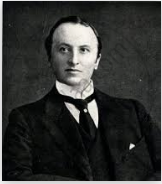Advertisements
Advertisements
Question
Match the following:
| Column A | Column B |
| 1. Dadabhai Naoroji | (a) 1905 |
| 2. Assertive nationalists | (b) separate electorates |
| 3. Partition of Bengal | (c) use of only Indian goods |
| 4. Muslim League | (d) immediate freedom from British rule |
| 5. Swadeshi | (e) early nationalists |
Solution
| Column A | Column B |
| 1. Dadabhai Naoroji | (e) early nationalists |
| 2. Assertive nationalists | (d) immediate freedom from British rule |
| 3. Partition of Bengal | (a) 1905 |
| 4. Muslim League | (b) separate electorates |
| 5. Swadeshi | (c) use of only Indian goods |
APPEARS IN
RELATED QUESTIONS
Fill in the blank:
The English language acted as a ___________ language among the educated Indians.
Choose the correct answer:
The Muslim League was established in________.
Answer the following question briefly:
With reference to the Indian national movement, answer the following: Examine the role of Subhash Chandra Bose in the Indian freedom struggle.
Fill in the blank:
The Quit India Movement took place in the year ____.
Fill in the blank:
Congress Socialist Party was formed in _______.
State whether the following statement is True or False:
Sir Stafford Cripps was an American officer sent to India.
State whether the following statement is True or False:
It was because of British presence in India that the country was made a target for Japanese attack.
Answer the following question:
Discuss the main aspects of the Non-Cooperation Movement.
Answer the following question:
Discuss the main features of the Government of India Act, 1935.
Look at the given picture.

Identify and name him?
